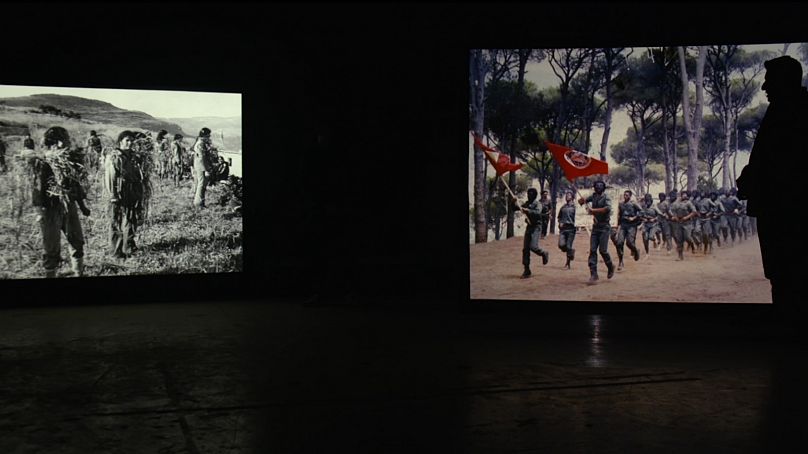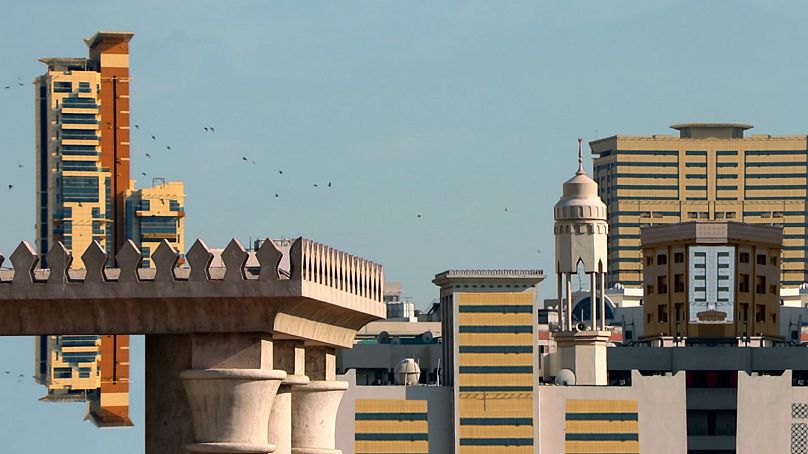The 14th edition of the Sharjah Biennial, which runs until June 10, is made up of paintings and sculptures dotted across customised sites throughout the emirate.
The 14th edition of the Sharjah Biennial, which runs until June 10, is made up of paintings and sculptures dotted across customised sites throughout the emirate.
Under the banner of Leaving the Echo Chamber, the exhibition’s three curators - Zoe Butt, Omar Kholeif, and Claire Tancons tackled subjects from war and migration to climate change and politics.
On display are the works of around 80 global artists, including 60 new commissions and never-before-seen creations.
Artists use Virtual Reality, performance art, and sound compositions to engage with viewers and stimulate thoughts on social issues.
The Lebanese artist, Laurence Abu Hamdan uses audio-visual installations in his piece called Once Removed, to offer a new perspective on the Lebanese Civil War.
The artwork centres on his muse, the writer and historian Bassel Abi Chahine, who believes that he is the reincarnated soldier, Yousef Fouad, who died in the war aged sixteen.
Flashbacks and unexplained memories led Abi Chahine to extensively research the sectarian conflict, to better understand what he believes was his former life.
“He really exists in two times at once,” says Abu Hamdan, “And the tension between the two times is what the work is really trying to deal with.”
Through his work, Abu Hamdan has supported human rights investigations and provided evidence at an asylum and immigration tribunal in the United Kingdom.
“I’m really interested in using art to experiment with the limits of what could constitute a testimony to an event,” he explains.
“It’s not my job, necessarily, to just give the facts as of how you would have them in the news - but to find other strategies for things that might not have the validity for science. Art could be its own way for making truth,” he added.
The Emirati artist, Alaa Edris, through her installation called The Black Boxes of Observational Activity, analyses the pace of progress in her hometown of Sharjah over the past decade.
Through photography and film installations, she displays experimental mappings of her urban environment, and by playing manipulated videos of the seemingly familiar she challenges what the observer believes to be truth.
“If you’re just looking for beautiful art, to me it’s just decoration,” she says. “You have to push boundaries with your artwork and really make the viewer question what they’re seeing and what it means within their context.”
SEEN ON SOCIAL: SETTING UP IN SHARJAH
Iranian artist Sasan posted this time-lapse of his calligraphy installation at the Sharjah Calligraphy Biennial, saying he loved to connect with artists from different cultures.













